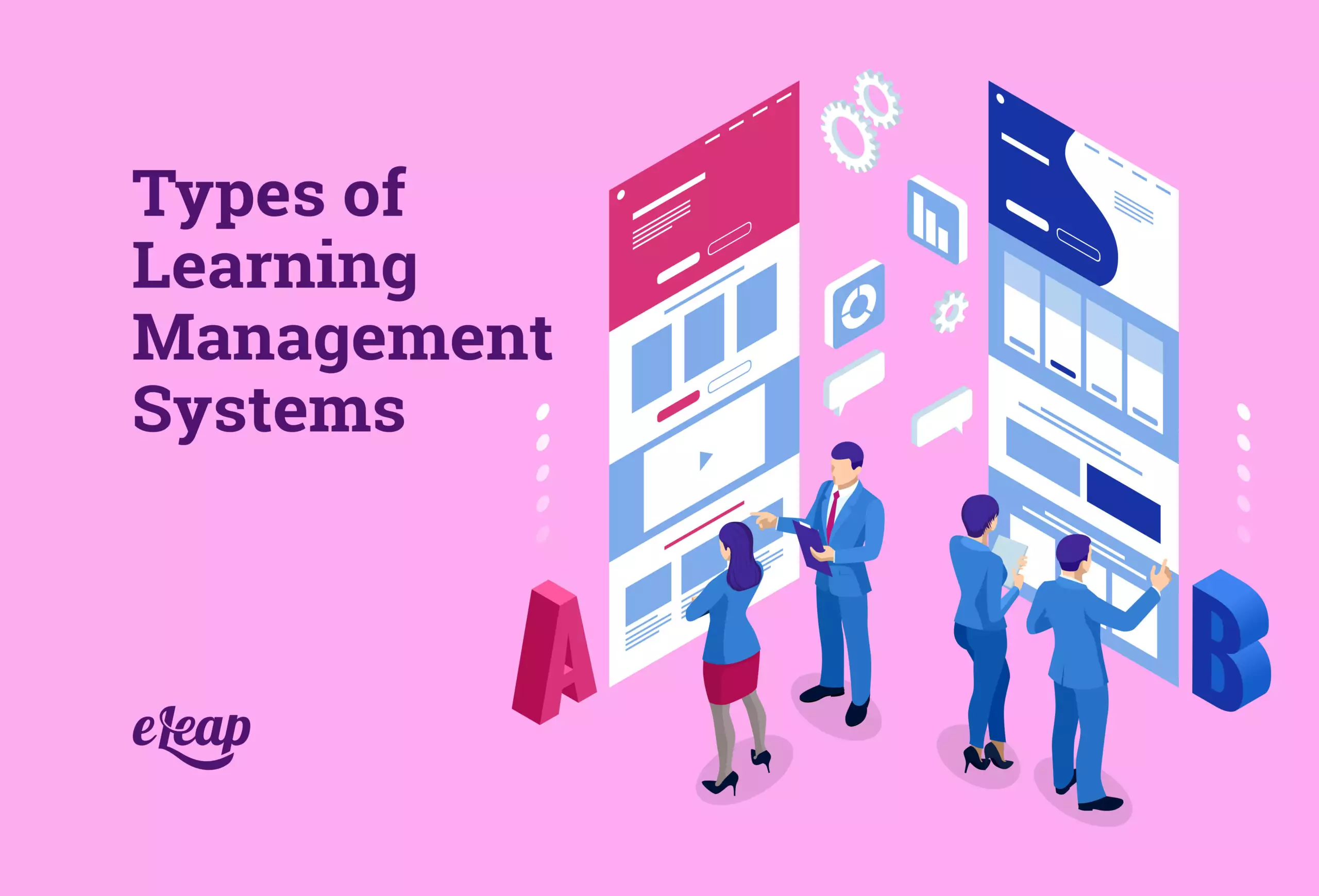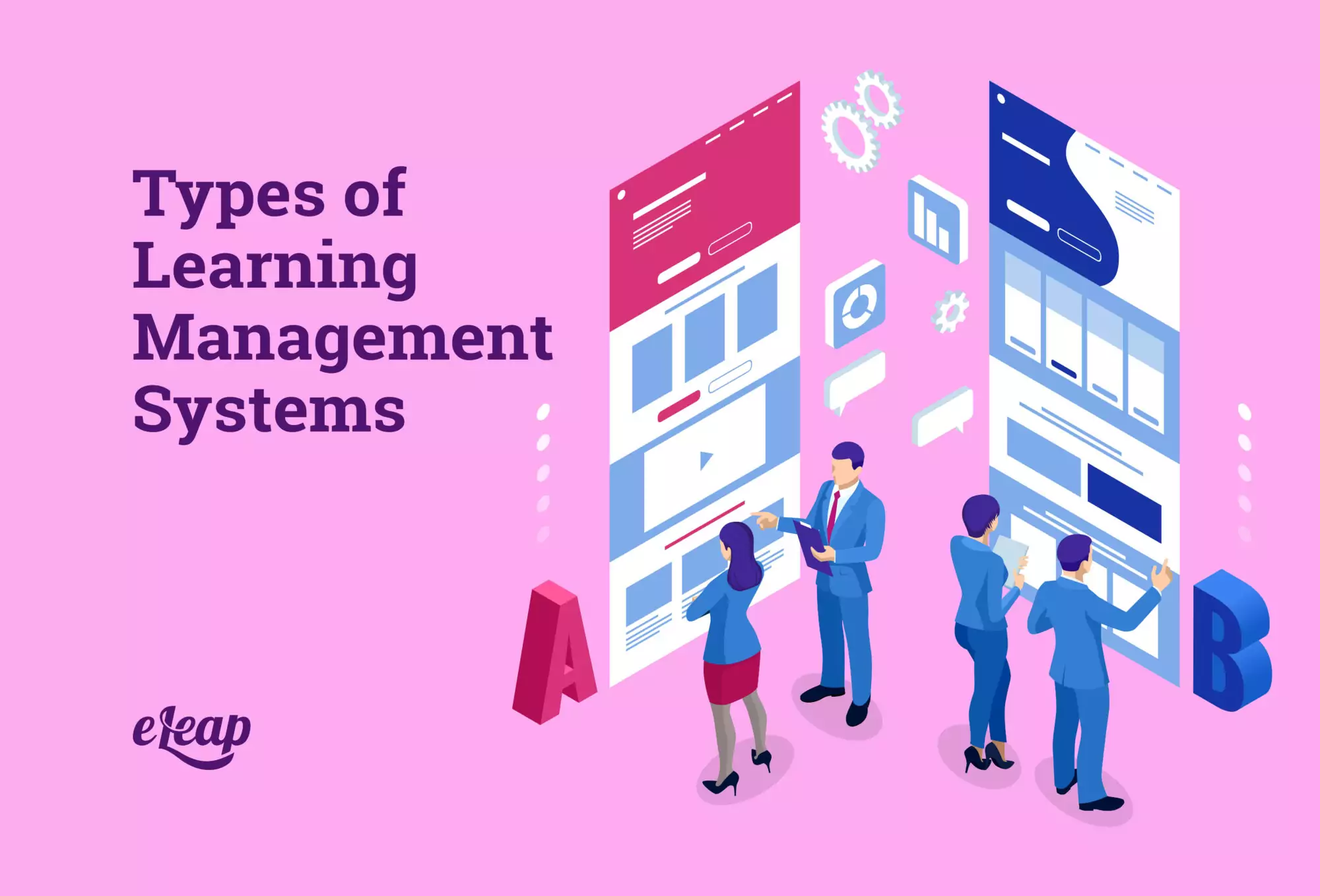Types of Learning Management Systems

Learning management systems have fast become the go-to method of training for the majority of organizations, and for a good reason. Organizations are now using learning management systems to deliver eLearning and manage employees’ learning needs. In addition, while these platforms all serve the same purpose, namely, to manage and administer a curriculum for a large and often dispersed workforce, the features provided by each platform can vary considerably. Without some knowledge of the differences between different types of learning management systems, it can be nearly impossible to choose the right LMS to suit your organization.
An organization needs to be able to take into account how it intends to deliver training materials to learners when choosing an LMS. Identify the features you need in an LMS and match them to the system you select. Here, we will introduce a quick guide to different LMS types to help you make the most informed decision possible.

Free LMS vs. Commercial LMS
Organizations often face this dilemma when choosing an LMS. Do you opt for free, open-source software or a commercial platform? There are benefits to both, but you need to understand the differences between the two before making a decision.
The main advantage of free, open-source software is that it’s, well, free. This appeals highly to organizations that have a tight budget or those who are nervous about forking out large amounts for their first LMS. In addition, free learning management systems are highly customizable for every organization since the source code is open source.
However, as with most free software options, there are also downsides to free learning management systems. Often, the vast majority of free LMS products are more complex than commercial products. They are often used by more advanced users, which can make them a tricky option for those who don’t have intimate knowledge of how an LMS works. Without reliable support, novice users may find it difficult to make even simple changes, although support can generally be found in online forums or in a separate, paid service.
In contrast, commercial software often comes with readily available support staff and tends to be much easier to deploy and use. But, of course, these systems are also more expensive. There are typically two main types of commercial LMS products: installed and service-based cloud options. Let’s talk about some of the key differences between these two.
Installed vs. SaaS
One of the most important features of an LMS is its ability to scale up or down quickly and easily. As a commercial LMS product, servers are typically either locally hosted by each organization or offered online via Software-as-a-Service (SaaS), allowing access to the data anywhere.
Trainers benefit from cloud-based SaaS products because they can scale up and down more easily. Due to the fact that the product is sold as a “service,” which is usually paid for monthly. What’s more, the LMS vendor is responsible for upgrades, freeing up bandwidth, and providing IT support. Because the data isn’t stored on local servers, scalability isn’t an issue; SaaS learning management systems can accommodate thousands of users at a time.
It is possible to customize and individualize a locally installed LMS. When an organization already has an IT department in place that can administer the LMS, handle support, and handle customization and scalability concerns, a locally hosted LMS can be very beneficial. SaaS-hosted platforms may be more appropriate if not.
Course Creation
It’s no use having an LMS that you’ve spent a lot of money on if you’re not satisfied with the content available to your learners. That’s why it’s so important that the LMS you choose has good course creation capabilities. You should also consider whether the LMS allows you to create training content that’s personal for your organization. Not all learning management systems feature authored content or allow the user to create their own courses. Sometimes, the LMS can serve as a simple tool for distributing course content created elsewhere.
Trainers and designers can, however, create their own content with some LMS systems that provide authoring tools. While other vendors offer separate course-creation tools, others do not, relying instead on third-party content.
Your organization might want to verify if your LMS supports the international SCORM standard if you plan to use course materials developed by third parties that conform to SCORM standards. Any SCORM-compliant LMS product or course is written in code that adheres to this standard. Depending on the amount of content you need for your organization, it might be possible to mix and match authored content with more generic course materials to help you save on costs. You may not need personalized course content for every single module you need for your learners. In many cases, it’s worth considering having an LMS that can deliver course content created elsewhere, as well as authored content.
Is Your LMS Integrated?
Learning management systems have evolved massively since the time they were first invented. There have been numerous developments, one of the most exciting being the capability to link them with other business applications, such as internal calendars, email, and social networks like Facebook and Twitter. In addition to LMSs, talent management systems also integrate closely with LMSs and management functions related to HR, including recruiting, performance management, and payroll. Consider an LMS that features app integration if this type of feature is important to your organization.
Integration is also a great way to make sure your employees take quickly to a new LMS. They’re likely to be put off if they not only have to learn to use the LMS but also have to learn all new systems because of a lack of integration capabilities.
Before you’re able to choose a learning management system that will work well for your particular organization, you need to have a basic understanding of the different types of LMS. Do you want to use a free platform, or would you rather pay for the benefits of a commercial LMS? Do you want something installed, or would you prefer software as a service? What about integration? Once you’ve started answering these questions, you’ll be well on your way to selecting the best possible system for your company’s needs.